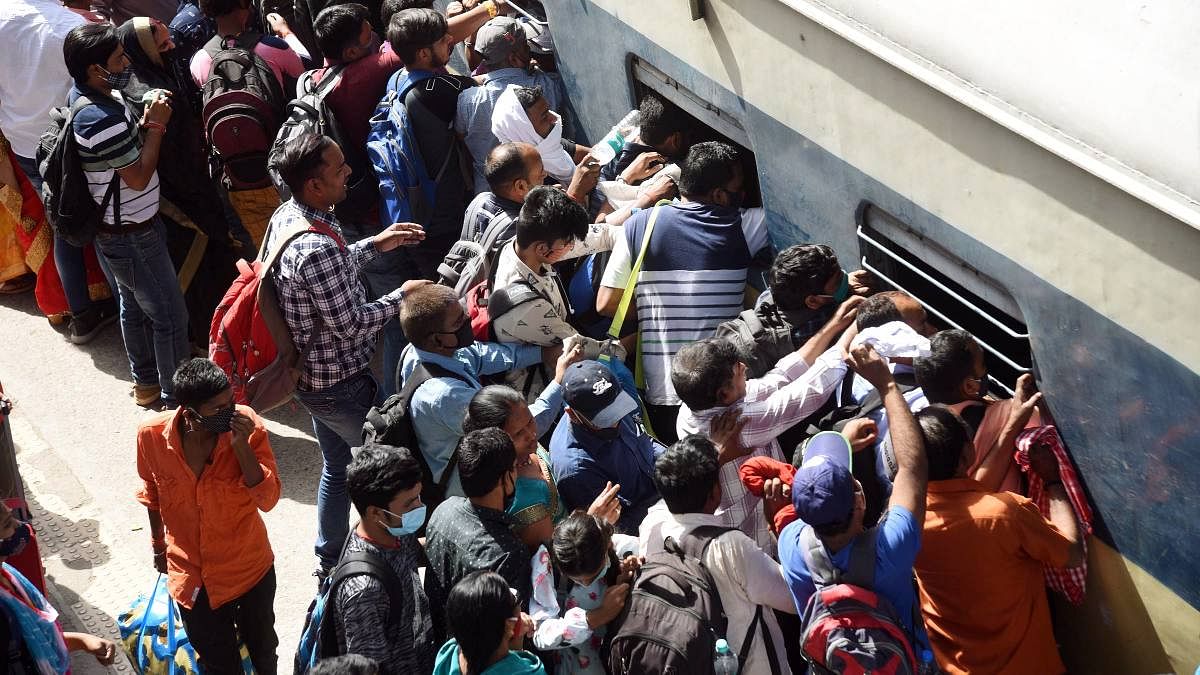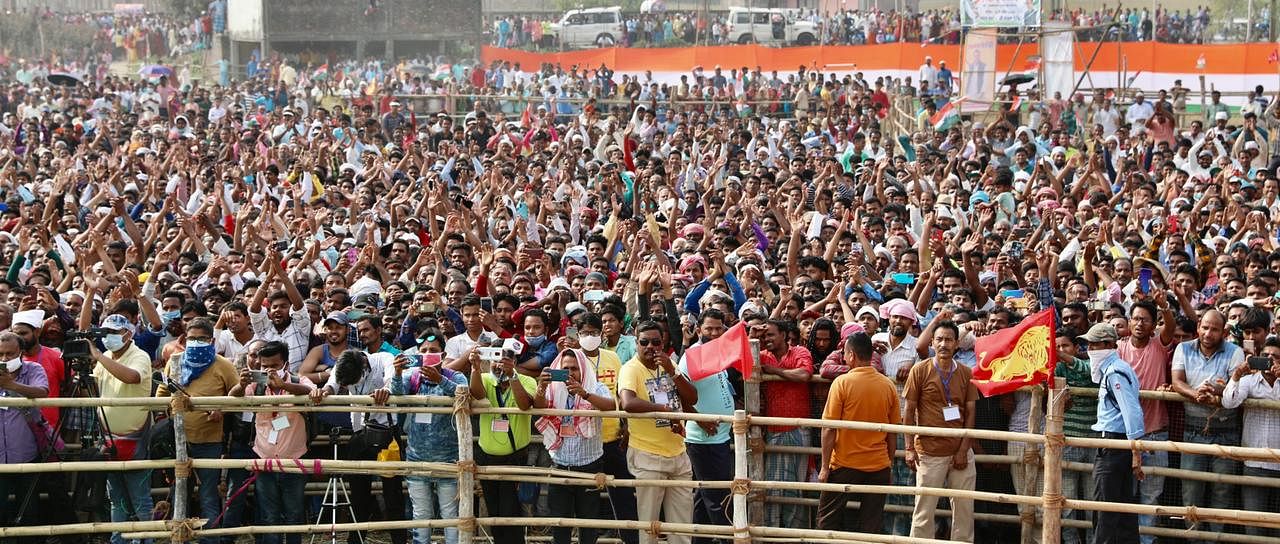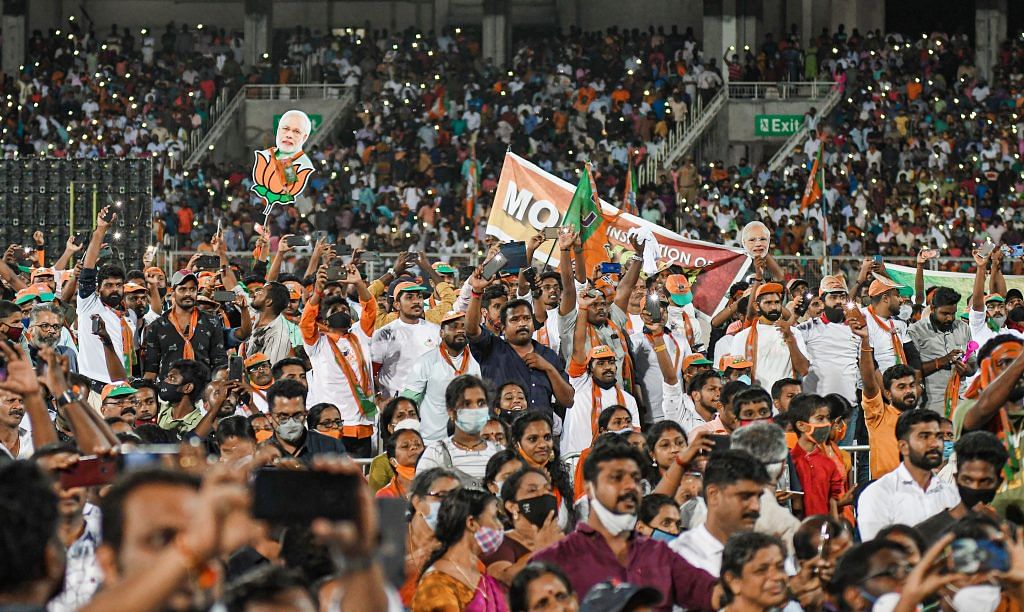New Delhi: On 13 April, 101 days after the first two Covid-19 vaccines were approved in India, the central government took a decision to waive the requirement of bridging trials in the country for vaccines approved in Europe, Japan, the US etc. What prompted its rigidity in December last year, when it refused to grant the same waiver to the Pfizer mRNA vaccine, is a mystery. Pfizer eventually withdrew its application and now wants its entry to be subject to certain conditions.
In February this year, during a Covid-19 review meeting with the PM, an embattled Maharashtra Chief Minister Uddhav Thackeray asked for Haffkine Biopharmaceutical Corporation, a state government undertaking, to be allowed to manufacture Covaxin. That approval came through only Thursday, with the Department of Biotechnology saying in a statement that the government will provide financial assistance to the facility, adding that it will produce 20 million doses a month.
Three months after Bharat Biotech’s Covaxin got the regulatory nod, the government is trying to get manufacturing started at a Rs 904 crore vaccine plant in Chengalpattu. It has also decided to support the Hyderabad-based Indian Immunologicals Limited (IIL) — a facility under the National Dairy Development Board and the central PSE Bharat Immunologicals and Biologicals Limited (BIBCOL), Bulandshahr — in order to equip it with the capacity to provide 10-15 million doses per month by August-September.
All these decisions took a lot of time to come, and only arrived in the wake of a ferocious second wave of the virus — which has seen daily cases breach the 2 lakh-mark Thursday, Friday and Saturday — and persistent complaints of vaccine shortage from states.
This has created a perception among experts that the central government, for some reason, thought that the pandemic was over and India would be a global exception in being spared a second wave.
Fuelling this line of thought is India’s decision to export crores of vaccine doses abroad — an initiative much lauded by recipient nations — even as it kept the domestic vaccination drive restricted to certain sections deemed vulnerable.
That is not it. When the English cricket team arrived in India earlier this year for a tour spanning Tests, T20s and ODIs, the showpiece Motera stadium, pitched as the world’s largest, was thrown open to people, before a rising number of Covid infections in Ahmedabad again forced audiences to tune in from home.
Along with this, the call on holding assembly elections in four states and a union territory — complete with the massive poll rallies they entail — and the Kumbh Mela, albeit a curtailed edition, are also seen as signs of a level of administrative complacence or fatigue, or both.
Add to this the pandemic fatigue of a public itching to return to pre-Covid ways, and conditions became rife for a new explosion in case numbers, say experts.
The second Covid wave in India was preceded by a near-return to normal amid falling case numbers, even as the authorities continued to urge caution and observance of precaution measures. Schools were reopened, and so were cinema halls and malls. Public transport like the Metro trains began to run as well, and the usual crowds were back at the markets.
Through it all, however, many exhibited a general disdain for preventive measures and it was a common enough sight to see people in large crowds, often without masks or wearing them improperly.

With the current case surge leading to reports of strains on India’s healthcare infrastructure, officials within the government say the Covid lull should have been used better to crush the disease. They now describe the time as a missed opportunity.
ThePrint reached the Union Ministry of Health and Family Welfare, and Press Information Bureau (PIB) Principal Director General Jaideep Bhatnagar by email for a comment to this report, but there was no response by the time of publishing.
Also Read: This Covid wave in India steeper than the first one, positivity rate over 10%
‘The speed has stumped everybody’
Earlier this year, India’s daily case count dipped to below 10,000 — the tally was recorded at 9,121 on 15 February — following a steady decline since September.
After India approved Covishield and Covaxin for rollout, it began exporting the two vaccines to countries around the world. Since 16 January, India has exported nearly 6.6 crore doses of vaccines (as of 16 April). In comparison, until Thursday morning, it had administered 11.44 crore doses domestically.
In March, India told the UN General Assembly, that it had exported more vaccine doses than it had given to its own people.
Amid the fresh surge, however, India has reportedly cut back its vaccine exports.
Dr Lalit Kant, former head of the department of epidemiology and infectious diseases at the Indian Council of Medical Research (ICMR), said “we somehow expected the second wave, if it came at all, to be like the earlier one and we thought we would be able to put our act together like last time”.
“But the speed has stumped everybody and we are not prepared to take care of so many people that need admission or medical attention… on vaccines also, we were thinking that we would be able to meet the demand just by the two indigenous vaccines. We always thought that we have been able to control the pandemic better than others. Doctors claim credit for it, and say deaths are less due to better management,” he added.
“But the truth is we cannot really take credit for it. Nobody knows how that happened. So, we started exporting vaccines and drugs and then the second wave hit us bad.”
Epidemiologist Dr Jayprakash Muliyel, former principal of Christian Medical College Vellore, said “the dip in numbers last time was really remarkable”.
“At that point, a good chunk of people were defending themselves, very carefully making sure they do not expose themselves. I think what happened is that with a vaccine on the horizon and the mortality numbers way below expectations, it led to a level of complacency… (both government and individuals) we all behave as one group of homosapiens,” he added.
So sceptical is he about the theory that the surge is caused by a new strain that he prefers not to use the word “wave”. “There have been few reinfections. The numbers went down and the virus fooled us completely,” he said.
Systemic/public fatigue
Officials in the Union Ministry of Health and Family Welfare and the National Centre for Disease Control (NCDC) admit that after a battle of over a year, a bit of fatigue has set in. The pressure, they say, may not have been so much had the intervening period between September, when India experienced its first Covid peak, and April had been spent more substantively.
“That period was a missed opportunity. We should have gone full hammer and tongs in testing, tracking and contact tracing to get rid of the virus completely. We did not because we were complacent, there was also a bit of fatigue in systems across states,” said a senior official.
Sources said the opinion of epidemiologists was not even sought before decisions were taken to go ahead with the Kumbh Mela and the assembly elections.
“We were asked to put together SOPs and we did. Nobody asked us if it was the right thing to do at this stage of the pandemic,” said an epidemiologist.
While the system was coming to terms with its fatigue, the public — largely forced by the pandemic to stay at home, and venture out only with multiple precautions — was eager for a glimpse of normalcy.
“Everybody wanted to get back to their jobs. Sportsmen wanted to return to sports, celebrities wanted to return to their parties and politicians wanted to return to their elections. Perhaps all this talk of Indian genes, herd immunity played into the minds of decision-makers and common people,” said Dr K.S. Reddy, president of the Public Health Foundation of India and Adjunct Professor of Epidemiology at Harvard School of Public Health.
“So we moved to a fully open society and the disease spread like wildfire. The rate of rise has overwhelmed the public health system.”
India is not an exception. Pandemic fatigue is a well-documented international phenomenon. In a January 2021 piece on the American Medical Association website, writer Sara Berg said: “At this point in the pandemic, people are tired of being cooped up due to restrictions on indoor gatherings outside the home. They are also tired of wearing masks, physical distancing, being away from family and friends, and increasingly fed up with the ‘new normal’ routines.”
People, she wrote, “are experiencing a type of burnout that experts are calling Covid-19 fatigue, which can lead to careless behaviors and a sharp rise in cases”.
Also Read: More 0-19 yr olds falling sick in India’s second Covid wave than last time, says ICMR
The notion that Indians are ‘protected’
The fatigue of the public and administration, say experts, found an ally in the sense of complacency driven by repeated claims of Indians having an edge in the battle against Covid-19.
For much of the first wave, thanks to the lower death rates in the country, many civil servants, public health experts and modellers suggested multiple reasons why Indians may be better equipped to beat Covid-19. There was the hygiene hypothesis, that Indians are protected because of their higher exposure to pathogens, and arguments suggesting the potential role of the BCG shot, which some studies claim may offer Covid protection.
Some, meanwhile, said it was because the population is younger than in a few European nations.
An India-specific Covid-19 supermodel even predicted that the pandemic would end by February, when the total number of active cases would come down to 20,000, but only if there is 100 per cent adherence to Covid-appropriate behaviour. The same model had predicted a bigger peak if Covid-appropriate behaviour was not followed.
“When cases were going down, people said that Indians were more exposed to pathogens, so they had built-in immunity. All that has now been proven wrong,” said Dr Shahid Jameel, director of Trivedi School of Biosciences at Ashoka University.
“Logically and objectively speaking, one factor is complacence. People have not been observing Covid-appropriate behaviour for months. The question actually is not why the second wave happened, but why it happened now. We cannot rule out new strains as one of the reasons. The fact that elections were announced added to that complacence. Why would people wear masks when they see their leaders on TV without masks?” he added.
While the campaign for the ongoing assembly elections has been marked by visuals of massive rallies where distancing and masking norms have gone for a toss, and leaders without masks, the Kumbh Mela, which draws lakhs of devotees, has thrown up similarly worrisome images.


All the while, there has been no word from the health ministry or government think tank Niti Aayog, a key stakeholder in India’s Covid management, about the risks involved.
Said Dr Ramanan Laxminarayan, Affiliate Professor, Global Health Director and Senior Fellow at the research organisation Center for Disease Dynamics, Economics & Policy: “The second wave was certainly not inevitable. A year ago, when the system was unprepared and people didn’t know about the disease, a lockdown was imposed to allow us time to prepare. While we are far better off on some accounts — we have more PPEs, masks, ventilators and oxygen, and vaccination is in full swing — a sense of complacency has set in which is driven by some notion that the disease is in the rear view mirror. Today we see that this is not the case.”
Quoting an interview he gave in January he added: “I had said ‘further moves towards normalcy — such as reopening schools and workplaces — could be accompanied by another uptick in cases, as individuals without immunity are exposed to the virus. A lot of this is in the rear-view mirror but that doesn’t mean we are done and dusted yet. We have an artificial situation in which we’ve reached an equilibrium, but if we went back to normal, there is still a lot of room for cases going up’. This is exactly what has happened.”
The government has said that April is going to be a difficult month. Whether the ordeal ends this month is something only time can tell. Meanwhile, some experts are already worried about a potential “third wave”.
(Edited by Sunanda Ranjan)
This is the last report in a three-part series on what went wrong in India’s Covid response. You can read the first two parts here and here.
Also Read: Vaccine maitri isn’t India’s problem. Centre-state scuffle during a Covid surge is







Leaders of opposition were also guilty of this complacence. As the government didn’t prepare itself for the second wave they didn’t protest. Nor did they ask the government to submit the salient features of its vaccination plan. As it occurs now, the government had no plan, it still has no plan. But the opposition too had no interest to corner the government on this most vital aspect. They indulged themselves in a futile and useless agitation on agri bills. This viral aspect of vaccination was totally ignored by everybody. All of us are guilty, more so the central government in Delhi.
It might be fatigue but it is more to do with LACK OF CIVIC RESPONSIBILITY.
I have a highly educated neighbour who himself and his family has stopped wearing mask because they had covid19 recently and feel they have become immune but ignores the fact that they can still infect others.
There are millions of INDIANS who are infecting other because they don’t care and believe it’s government’s responsibility to arrange for treatment.
So I would request THE PRINT to stop showing political rallies as something that is spreading covid19. It’s actually people all over country not following covid19 protocol.
I have no idea when media will speak truth. Is it so difficult .
If somebody dies of covid because of lack of Oxygen supply/medication/ hospital beds/ ambulances it would be the fault of the patient itself
If a policeman/healthcare worker/sanitation worker contracts covid it is their own fault
If a working citizen contracts covid inspite of wearing mask it is their own fault
If Modi as PM does political rallies and people attend, it is the people’s fault
If EC conducts an election over a month’s time instead of 1 day it is the people’s fault.